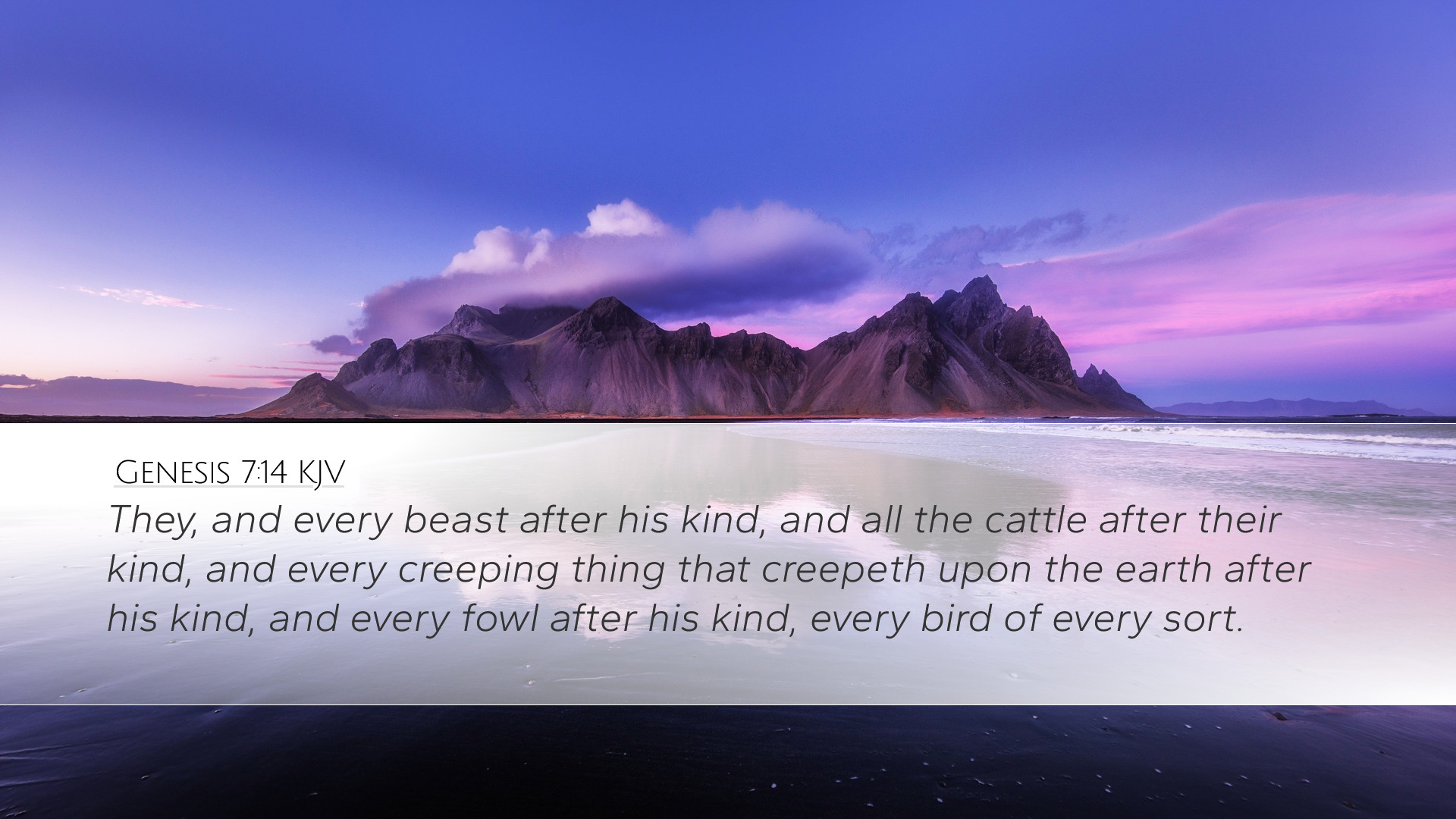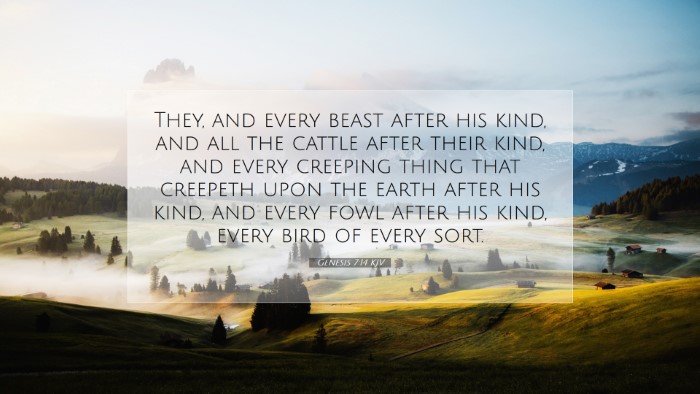Commentary on Genesis 7:14
Verse: "They went in to Noah into the ark, two and two of all flesh wherein is the breath of life."
Introduction
This verse marks a pivotal moment in the narrative of Noah's Ark, capturing the obedience of creation as they respond to God's command. Theological insights from public domain commentaries reveal the multifaceted implications of this event, serving as both a historical account and a profound teaching on God’s sovereignty and mercy.
The Invitation to the Ark
Matthew Henry's Commentary: Henry emphasizes the divine orchestration in bringing the animals to Noah. He suggests that their coming into the ark exemplified their inherent understanding of the impending judgment and the providence of God. This act denotes a significant obedience to God's will, contrasting the disobedience of humanity that led to the Flood.
Albert Barnes' Notes: Barnes notes the diverse representation of creation gathered into the ark. He underscores that the phrase "two and two" signifies pairs, implying both male and female, essential for the continuation of species post-flood. This reflects God's foresight in preserving life after judgment.
The Symbolism of the Ark
Adam Clarke's Exposition: Clarke expounds on the ark as a symbol of salvation amid judgment. He articulates that just as Noah and the creatures found refuge within the ark, so too do believers find safety in Christ. The ark foreshadows God's means of deliverance, demonstrating His mercy amidst impending doom.
The Breath of Life
This phrase "wherein is the breath of life" carries profound theological significance. It points to the divine essence granted to creation by God. The inclusion of "the breath of life" serves to remind us of the sanctity of life, reinforcing the notion that every living being is under the sovereign care of God.
Theological Reflections
- Creation's Response: The affirmative response of the created order to God’s command contrasts the resistance seen in humanity. This obedience extends into theology, teaching us about the nature of creation and its relationship with the Creator.
- God's Sovereignty: Even in judgment, God maintains sovereignty and order. The orderly procession of animals into the ark underlines the belief in a God who is actively involved in His creation.
- Preservation of Life: The act of gathering creatures signifies God’s intent to preserve life, demonstrating His grace and foresight, and serves to remind us of our responsibility to care for creation.
Practical Applications
Across various dimensions—pastoral, scholarly, and personal—the insights drawn from this verse encourage believers to reflect on their compliance with God's directions. The narrative encourages us to live in obedience despite the chaotic environment, just as Noah did, fostering faith amid uncertainty.
For Pastors:
Sharing the message of obedience is crucial in pastoral ministry. Pastors can draw parallels from this narrative to teach congregations about the importance of heeding God's voice in their lives and the blessings of stepping into His purpose, which may often seem daunting.
For Students and Theologians:
Students of the Bible are called to delve deeper into the intertextual connections between the Old and New Testament. Understanding the symbolic significance of the ark reinforces fundamental theological tenets regarding salvation, judgment, and grace.
For Scholars:
This verse provides a rich ground for scholarly exploration regarding the narrative structure of the Flood account, theological implications of divine judgment, and the overarching themes of life and death throughout the biblical text.
Conclusion
Genesis 7:14 is more than a moment in history; it encapsulates messages of obedience, divine mercy, preservation, and the sanctity of life. Through the insights of Henry, Barnes, and Clarke, this verse speaks profoundly to the faith journey of individuals and the overarching narrative of salvation history.


